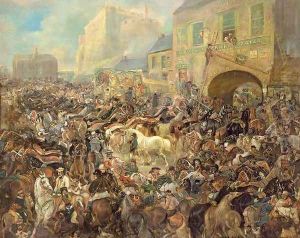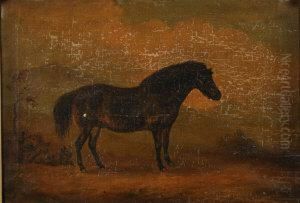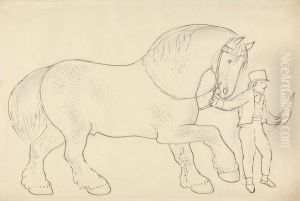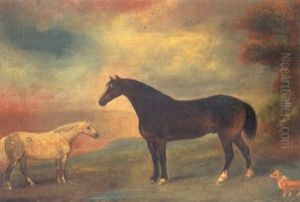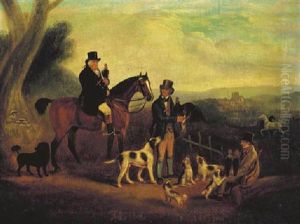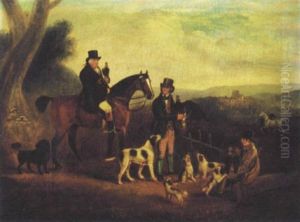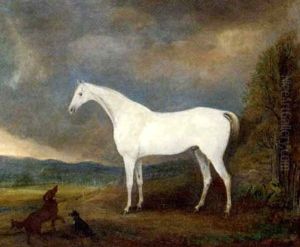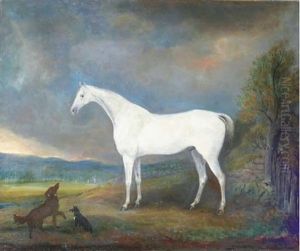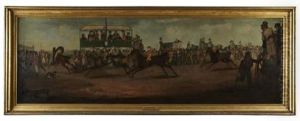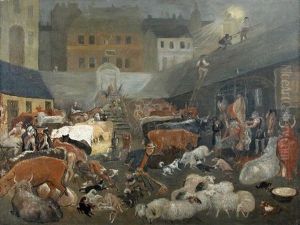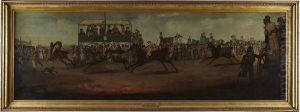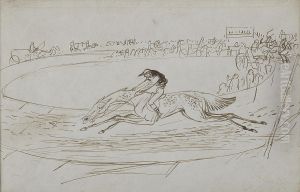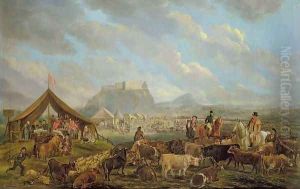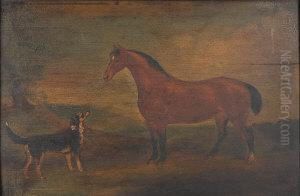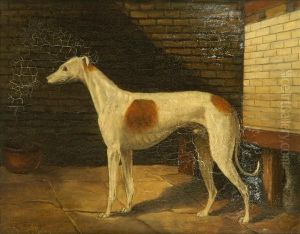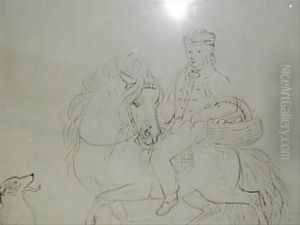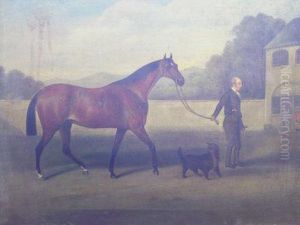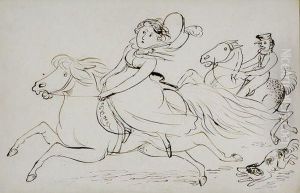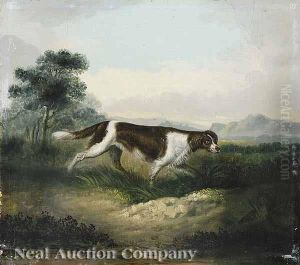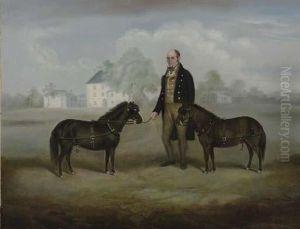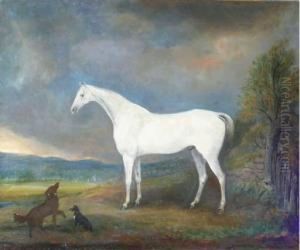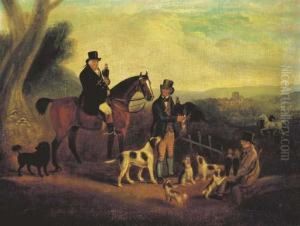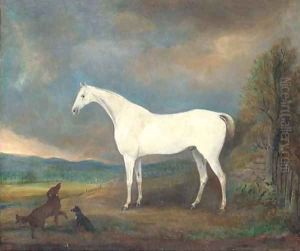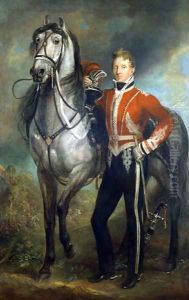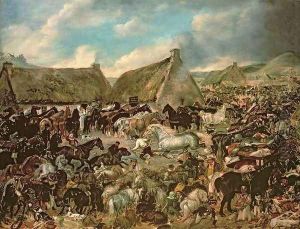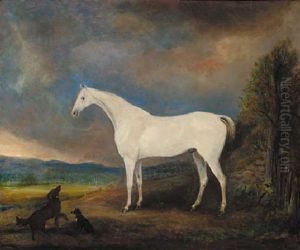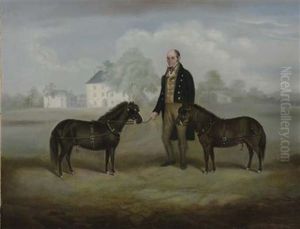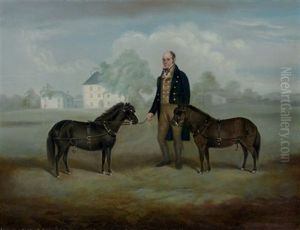James Howe Paintings
James Howe was a Scottish painter known for his animal paintings, portraits, and genre scenes. Born in 1780 in Skirling, Peeblesshire, Scotland, Howe started his career as a self-taught artist, painting animals from a young age. His talent was recognized early on, and he began to receive commissions for animal portraits, particularly of horses, which became his specialty.
In his early twenties, Howe moved to Edinburgh, where he continued to develop his skills and reputation. He became associated with the Edinburgh art scene and was a contemporary of other Scottish artists such as Sir Henry Raeburn. Howe's keen observation of animal anatomy and behavior, combined with his ability to capture the individual character of his subjects, earned him the nickname 'The Scottish Stubbs', a reference to the famous English animal painter George Stubbs.
During his career, Howe also painted a number of portraits and genre scenes, often featuring country life. His portraits are less well-known than his animal paintings but are nonetheless characterized by a similar attention to detail and a strong sense of realism. Howe's genre scenes often depicted the Scottish peasantry, showcasing his ability to capture the nuances of daily life with sensitivity and authenticity.
Howe's work was exhibited at the Royal Scottish Academy, and he gained a solid reputation among patrons and fellow artists alike. His paintings can now be found in various art galleries and private collections, and they remain a testament to his skill in capturing the essence of both the people and animals of his time.
James Howe died in 1836 in Edinburgh. His legacy as a leading animal painter of his generation in Scotland has continued to be celebrated, and his work contributes to the broader history of British animal painting, which was a significant genre in the 18th and early 19th centuries.
